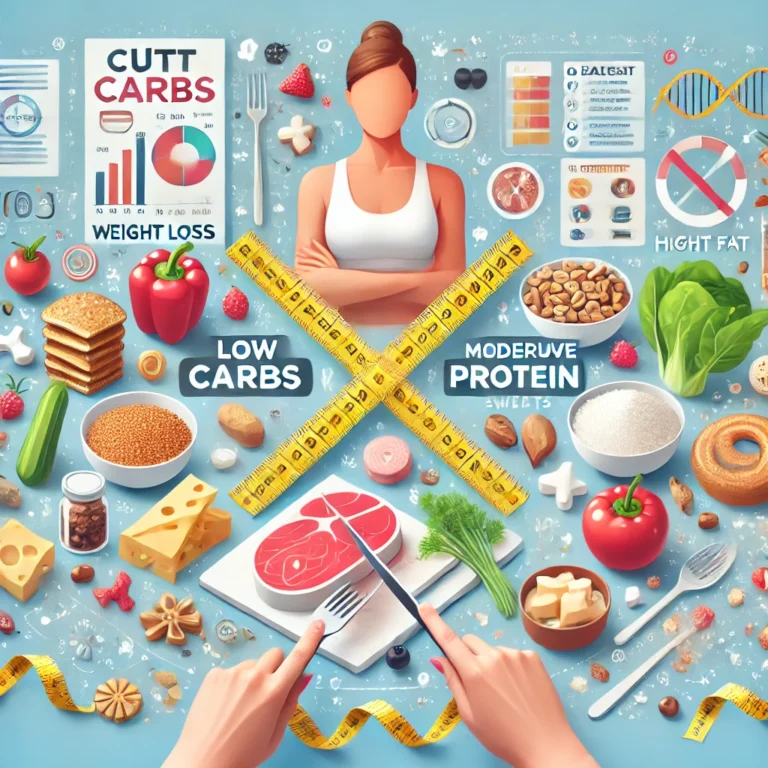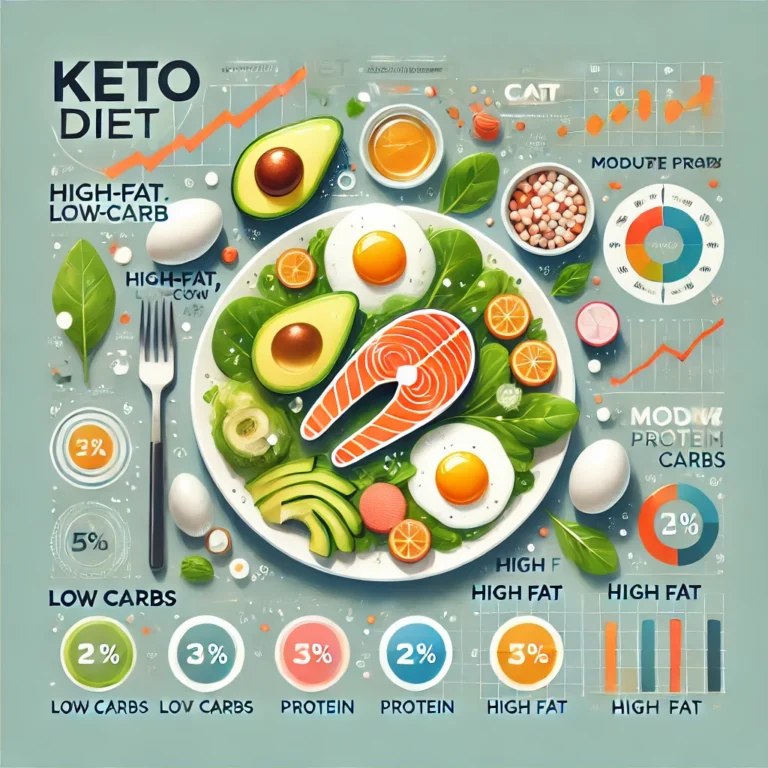
The ketogenic (keto) diet is a low-carb, high-fat diet that has been gaining popularity for its ability to promote weight loss, improve health, and potentially offer other benefits, such as enhanced mental clarity and improved energy levels. This guide will help you understand the basics of the keto diet, how it works, what to eat, and how to get started.
What is the Keto Diet?
The keto diet drastically reduces your carbohydrate intake and replaces it with fat. This reduction in carbs puts your body into a metabolic state called ketosis, where fat becomes the primary source of energy instead of glucose (from carbs).
How Does Ketosis Work?
Normally, your body converts carbs into glucose, which is used for energy. When carbs are limited, your body starts burning fat for fuel by converting it into molecules called ketones, which can efficiently power your brain and body. Entering ketosis typically takes 2-4 days of strict carb restriction (below 50 grams of net carbs per day).
Benefits of the Keto Diet
Weight loss: Ketosis helps your body burn stored fat, leading to weight loss.
Appetite control: Fats and proteins can make you feel fuller longer, reducing hunger cravings.
Improved energy and focus: Many people report clearer thinking and more stable energy throughout the day.
Better blood sugar control: It can help manage and even reverse type 2 diabetes in some individuals.
Improved cholesterol levels: Some studies suggest that keto can improve heart health by raising HDL (good) cholesterol and lowering triglycerides.
Foods to Eat on the Keto Diet
High-Fat Foods (70–80% of daily intake)
Meats: Beef, pork, chicken, turkey, lamb, and fatty cuts like bacon.
Fish and seafood: Salmon, mackerel, sardines, and shellfish.
Eggs: Whole eggs, including the yolk.
Dairy: High-fat dairy products like cheese, butter, cream, and full-fat yogurt.
Healthy oils: Olive oil, coconut oil, avocado oil, and ghee.
Nuts and seeds: Almonds, walnuts, chia seeds, flaxseeds.
Avocados: A great source of fat and fiber.
Low-carb vegetables: Leafy greens (spinach, kale), broccoli, cauliflower, zucchini, peppers.
Moderate-Protein Foods (15–25% of daily intake)
Poultry: Chicken thighs, turkey, duck.
Red meat: Beef, lamb, pork.
Fish and shellfish: Tuna, shrimp, and fatty fish like salmon.
Eggs: A great source of protein and fat.
Tofu and tempeh: For vegetarians, these are excellent plant-based protein sources.
Very Low-Carb Foods (5–10% of daily intake)
Leafy greens: Spinach, kale, romaine, and other salad greens.
Non-starchy vegetables: Broccoli, cauliflower, bell peppers, zucchini, and mushrooms.
Berries (in moderation): Small amounts of raspberries, blackberries, or strawberries.
Foods to Avoid on the Keto Diet
Sugary foods: Candy, cakes, ice cream, soda, and fruit juices.
Grains and starches: Bread, pasta, rice, cereal, and baked goods.
Fruit: Most fruit is high in carbs, except for small amounts of berries.
Legumes: Beans, lentils, chickpeas, and peas.
Root vegetables: Potatoes, sweet potatoes, carrots, and other starchy vegetables.
Unhealthy fats: Processed vegetable oils (canola, corn), trans fats, and margarine.
Alcohol: Most alcoholic drinks contain carbs (e.g., beer, sugary cocktails).
Keto-Friendly Snacks
Cheese cubes or slices
Hard-boiled eggs
Avocado with salt
Nuts (in moderation)
Olives
Keto fat bombs (usually made with coconut oil or butter)
Celery with peanut butter or cream cheese
Small servings of dark chocolate (85% cocoa or more)
How to Start the Keto Diet
Determine Your Macros: Your macronutrient ratio should be about 70% fat, 20% protein, and 10% carbs. You can use a keto calculator to determine the exact amount of each based on your goals.
Start Tracking Your Carbs: Aim to consume 20-50 grams of net carbs per day. Net carbs = total carbs – fiber.
Focus on Whole Foods: The foundation of your diet should be whole, unprocessed foods. Avoid packaged keto products as they often contain hidden carbs.
Stay Hydrated: Drink plenty of water, as ketosis can lead to water loss. Also, ensure you’re getting enough electrolytes (sodium, potassium, magnesium).
Meal Plan and Prep: Planning meals in advance helps ensure you stick to your keto goals. Prepare keto-friendly meals and snacks ahead of time.
Expect the Keto Flu: When transitioning to keto, you might experience fatigue, headaches, nausea, or irritability — commonly called the “keto flu.” This usually lasts a few days as your body adapts. Staying hydrated and replenishing electrolytes can help reduce symptoms.
Test for Ketosis: You can check whether you’re in ketosis using urine strips, blood meters, or breath analyzers, but this is optional.
Common Mistakes to Avoid
Eating too much protein: Excess protein can be converted into glucose, preventing ketosis.
Not getting enough fat: Keto is a high-fat diet, so skimping on fat will leave you hungry and less likely to succeed.
Neglecting vegetables: Low-carb veggies are essential for fiber and micronutrients.
Not supplementing electrolytes: Make sure you’re getting enough sodium, potassium, and magnesium to avoid dehydration and muscle cramps.
Keto and Exercise
While the keto diet can be effective for weight loss and energy, those who engage in high-intensity exercise may need to experiment with their fat, carb, and protein ratios to maintain performance. Some opt for a cyclical ketogenic diet (CKD), where they increase carb intake around workouts, or a targeted ketogenic diet (TKD), where they consume carbs just before intense exercise sessions.

